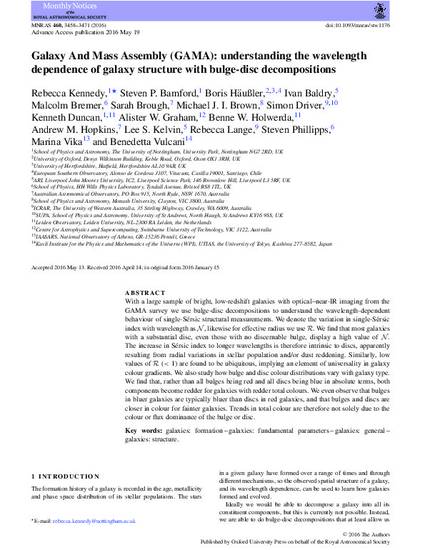
With a large sample of bright, low-redshift galaxies with optical–near-IR imaging from the GAMA survey we use bulge-disc decompositions to understand the wavelength-dependent behaviour of single-Sérsic structural measurements. We denote the variation in single-Sérsic index with wavelength as N N , likewise for effective radius we use R R . We find that most galaxies with a substantial disc, even those with no discernable bulge, display a high value of N N . The increase in Sérsic index to longer wavelengths is therefore intrinsic to discs, apparently resulting from radial variations in stellar population and/or dust reddening. Similarly, low values of R R (< 1) are found to be ubiquitous, implying an element of universality in galaxy colour gradients. We also study how bulge and disc colour distributions vary with galaxy type. We find that, rather than all bulges being red and all discs being blue in absolute terms, both components become redder for galaxies with redder total colours. We even observe that bulges in bluer galaxies are typically bluer than discs in red galaxies, and that bulges and discs are closer in colour for fainter galaxies. Trends in total colour are therefore not solely due to the colour or flux dominance of the bulge or disc.
Kennedy, Rebecca, et al. "Galaxy And Mass Assembly (GAMA): Understanding the Wavelength Dependence of Galaxy Structure with Bulge-Disc Decompositions." 2016. Monthly Notices of the Royal Astronomical Society 460(4): 3458-3471.

This article has been accepted for publication in Monthly Notices of the Royal Astronomical Society Copyright: 2016. Published by Oxford University Press on behalf of the Royal Astronomical Society. All rights reserved.
https://doi.org/10.1093/mnras/stw1176